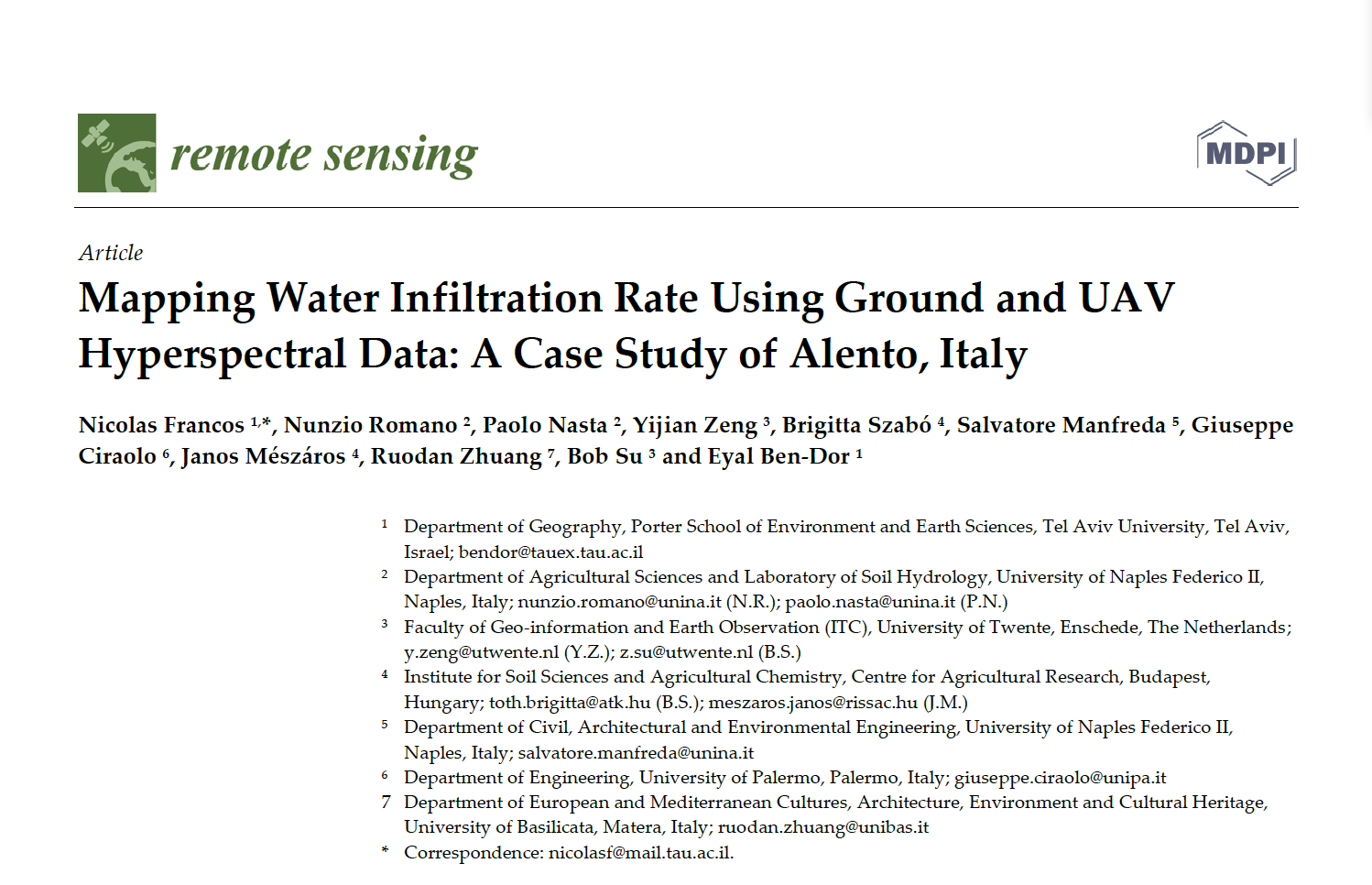Water infiltration rate (WIR) into the soil profile was investigated through a comprehensive study harnessing spectral information of the soil surface. As soil spectroscopy provides invaluable information on soil attributes, and as WIR is a soil surface-dependent property, field spectroscopy may model WIR better than traditional laboratory spectral measurements. This is because sampling for the latter disrupts the soil-surface status. A field soil spectral library (FSSL), consisting of 114 samples with different textures from six different sites over the Mediterranean basin, combined with traditional laboratory spectral measurements, was created. Next, partial least squares regression analysis was conducted on the spectral and WIR data in different soil texture groups, showing better performance of the field spectral observations compared to traditional laboratory spectroscopy. Moreover, several quantitative spectral properties were lost due to the sampling procedure, and separating the samples according to texture gave higher accuracies. Although the visible near-infrared–shortwave infrared (VNIR–SWIR) spectral region provided better accuracy, we resampled the spectral data to the resolution of a Cubert hyperspectral sensor (VNIR). This hyperspectral sensor was then assembled on an unmanned aerial vehicle (UAV) to apply one selected spectral-based model to the UAV data and map the WIR in a semi-vegetated area within the Alento catchment, Italy. Comprehensive spectral and WIR ground-truth measurements were carried out simultaneously with the UAV–Cubert sensor flight. The results were satisfactorily validated on the ground using field samples, followed by a spatial uncertainty analysis, concluding that the UAV with hyperspectral remote sensing can be used to map soil surface-related soil properties.
How to cite: Francos, N.; Romano, N.; Nasta, P.; Zeng, Y.; Szabó, B.; Manfreda, S.; Ciraolo, G.; Mészáros, J.; Zhuang, R.; Su, B.; Ben-Dor, E. Mapping Water Infiltration Rate Using Ground and UAV Hyperspectral Data: a Case Study of Alento, Italy. Remote Sensing, 13, 2606, (doi: 10.3390/rs13132606) 2021. [pdf]
